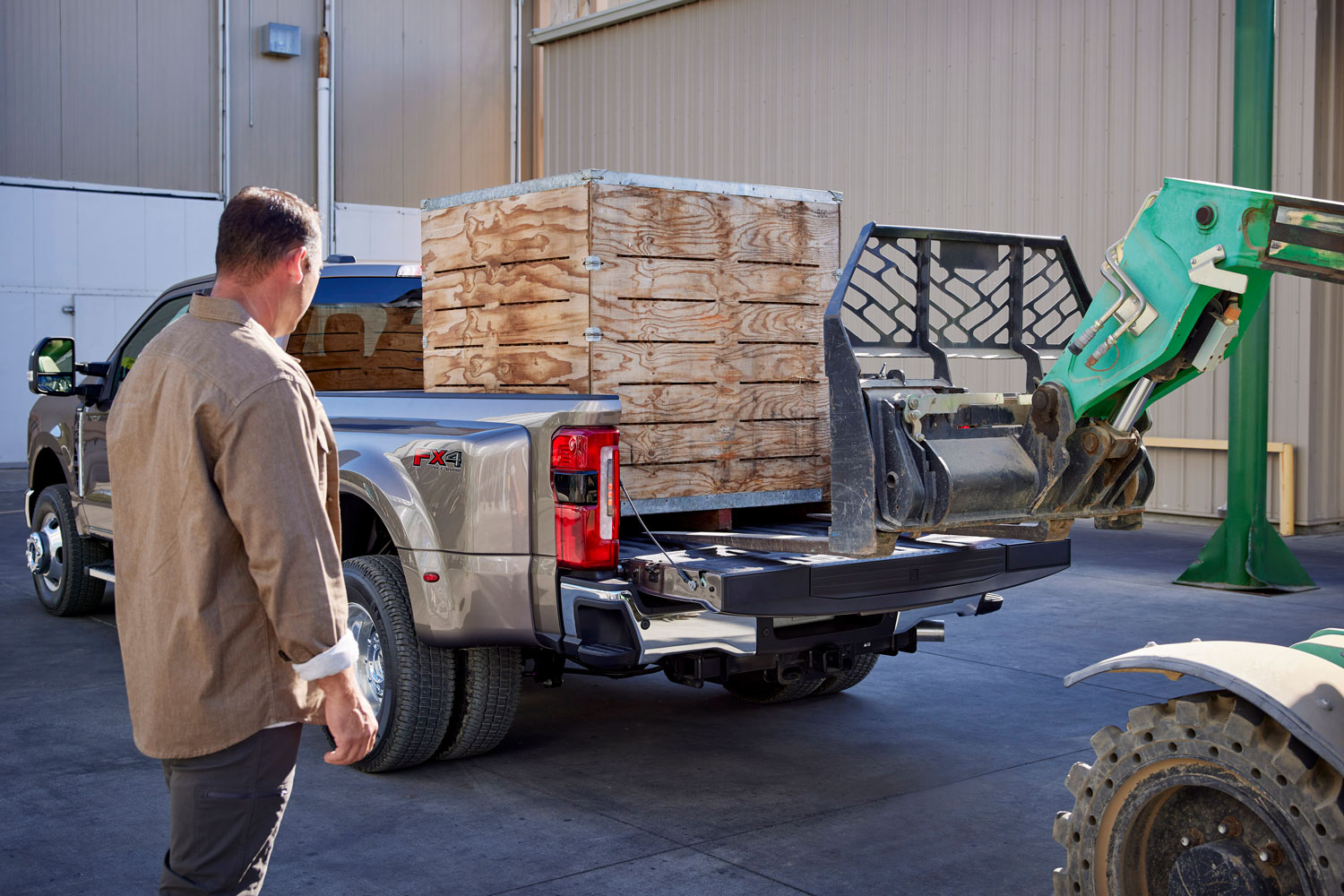3 Tips and Tricks for Hauling Cargo in Your Truck's Bed
Securing your cargo carefully is safer for you and those around you.
 Ford
Ford
You might have seen a truck driving down the highway with cargo clinging to its bed for dear life. Loads that are improperly secured are unsafe, causing nearly 80,000 accidents between 2011 and 2014, according to a 2016 study by the AAA Foundation for Safety. Also, depending on where you live, you could be fined anywhere from 10 bucks to $5,000 if an item falls from your truck.
You might be able to avoid these perils by simply securing your load. Here's how.
1. Check Your Payload Rating and Plan Accordingly
The first thing you should know is your truck's payload limit. This number represents the maximum amount of weight your truck can safely carry, including passengers, cargo inside the truck, and fluids. You can find this number on the driver's side door placard or in your manual. You can also find it on the manufacturer's website. Remember to look up your specific truck, as different wheelbases and drivetrains will have different payload ratings.
Overloading your vehicle can compromise its steering, suspension, and braking systems, among other components. You can even damage your transmission if you try to take too heavy a load up too steep a hill. It's better to make multiple trips if you have a lot to move.
Some new trucks such as the 2023 Ford F-350 have built-in scales to help estimate the weight of cargo.
2. Strap It Down
Tie-down straps are helpful for strapping down a load. Usually 1-inch-wide straps are fine, but when in doubt, get yourself a set of 2-inch straps. Match the working load limit of the straps to the weight of the cargo you intend to haul. If your truck did not come with anchor points in the bed, you should get some installed. It's better not to hook anything to the outside of the truck, as you're likely to incur damage.
For lighter loads, you might only need a cargo net. These can be stretchy or static, and they hook onto your truck's anchor points. Cargo nets are a great solution for those hauling smaller items that might easily blow out of the bed of the truck.
If you're hauling dirt or mulch, cover it with a tarp and use your tie-down straps to tie it all down. You'll likely want to use two straps in an X pattern and another strap going across the middle to ensure as little dirt as possible escapes.
3. Keep It Balanced
Whatever you're hauling, make sure it is balanced. Heavier items should go towards the front of the truck bed, closest to the cab, and it's best to aim to have the weight equal from side to side as well. If you load heavy items too far behind the rear axle, there might not be enough weight on the front to maintain full contact with the road. If the weight is not balanced side to side you could experience steering problems and put more stress on your suspension components.
In general, it's best to put heavier things low in the bed and toward the cab . If you must stack multiple items, place the heaviest stuff first and then stack accordingly — or consider making additional trips.
Written by humans.
Edited by humans.
 Emme Hall
Emme HallEmme Hall loves small convertibles and gets out to the canyons in her 2004 Mazdaspeed Miata whenever she can. You can also find her in the dirt in her lifted (yes, that's right) 2001 Mazda Miata, or racing air-cooled Volkswagens in races like the Baja 1000. She's taken first place twice in the Rebelle Rally — once driving a Jeep Wrangler and then a Rolls-Royce Cullinan the second time. She was also the first driver to take an electric vehicle to the Rebelle Rally when campaigning the Rivian R1T to a top-five finish.
Related articles
View more related articles